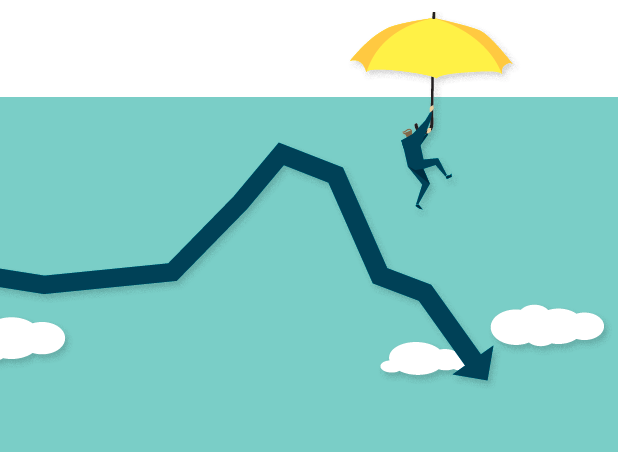Is Your Glass Company Recession-ready?
Break down business operations and improve efficiencies

There is growing concern that the United States is entering a recession. The decade-long recovery may be losing steam, and the economy may experience a contraction. At least, that is what some experts, and many TV pundits, say. Conversely, many experts are looking at the same or similar data and are coming to a different conclusion. They think the economy is stable and doing well.
As a business owner, how do you know which experts are right? More importantly, how do you develop a sensible business strategy considering this uncertainty?
Business owners should work now to protect their companies against these economic uncertainties. And the best time to prepare is when things are going well, and an owner has time and resources to move in deliberate and calculated ways.
Protecting a company against economic uncertainty involves instituting several common-sense business practices. An owner should be implementing these practices regardless of whether or not there is a slowdown coming. If there isn’t a slowdown, these practices will most likely improve profitability. And if there is a slowdown, they will improve the chances of survival. More importantly, if there is a slowdown, they will improve the chances of capitalizing on new opportunities when the economy recovers.
Improve collections and credit.
A common reaction to a slowing economy is to pay vendors more slowly. Almost all customers do this. In other words, if things get tough, an owner can expect good clients to take longer to pay. Average clients may slide into marginal territory. And clients who were in marginal territory may slip into the bad debt territory.
On the credit front, owners should check the commercial credit of every major client before providing them with 30- to 60-day payment terms. Do not provide credit to clients who don’t deserve it. Clients who don’t have good credit should prepay for products and services.
Many credit reports also show payment trends. These trends are important. Look at them carefully. Review reports for major ongoing clients every 60 to 90 days. Be wary of clients with a negative payment trend. This behavior is often an indicator of problems to come. An owner can check commercial credit reports through vendors such as Dun & Bradstreet, Cortera, Experian Commercial, and Ansonia Credit.
An owner should fine-tune the collections department and ensure that clients get invoiced as soon as the contract allows it. Verify that invoices and supporting documents have been received on time. Call clients when a payment is delayed and determine when it will be received.
Lastly, consider sharing data with credit bureaus (check with the legal department first, but it’s usually OK). This practice allows an owner to put a notice on your invoices that alerts clients that their payment experience, good or bad, will be disclosed. This notice can motivate companies to pay on time.
Get better payment terms.
An owner may be tempted to conserve cash by paying their own vendors slowly. This strategy is valid. However, there is a right way and a wrong way to do it. The wrong way is to simply delay payments and pay vendors past deadline. Sure, this approach conserves cash. It also hurts the company’s credit, as those late payments may be reported to credit bureaus. This reporting may prevent a company from getting credit terms in the future.
A smarter strategy is to negotiate better payment terms beforehand. Businesses can ask for higher discounts for early payment and for a longer payment term. This approach allows a company to pay more slowly, while still being reported to credit bureaus as a good payor. Vendors are more likely to provide better terms while things are going well.
Build a cash reserve.
Money buys time. Time gives options. Options ensure survival.
A company should always have a cash reserve. This reserve gives a company breathing room and enables owners to make decisions carefully.
The size of the cash reserve is a matter of preference and debate. Some people advocate for a month’s worth of expenses. Others advocate for a longer period, such as three months. Ultimately, it is a personal choice.
However, there is a trade-off between having a large cash reserve and growing the business. Why? Funds in the cash reserve can’t be used to pursue new opportunities or clients. Those funds must sit unused in a bank account.
There is, however, one way around this problem. An owner can get a line of credit and use it only in emergencies. This line of credit can be used to complement a smaller cash reserve. Just keep in mind that banks decided to close many of these lines during the last recession, just when their clients needed them the most.
Optimize costs.
Review costs with a fine-tooth comb and look for places where things can be improved. Examine costs by order of importance. Determine which costs can be reduced by finding better suppliers, consolidating teams, or outsourcing functions. Any cost that can be trimmed now gives a company resources that can be ploughed into cash reserve or used elsewhere.
Cut unprofitable services and products.
Work with the finance team to determine the profitability of products and services. Determine all-in cost of delivering a product or service. Consider cutting unprofitable ones, unless there is a valid strategic reason to keep them.
Consider diversifying the business.
This strategy is crucial if revenues are concentrated on any specific client, client type or products. Such concentration makes revenues sensitive to minor changes in the economic landscape.
A company can diversify by adding new alliances, promotions, sales efforts, products, services or locations. Adding new sources of revenue helps diversify income. This approach can provide stability during slowdowns.



